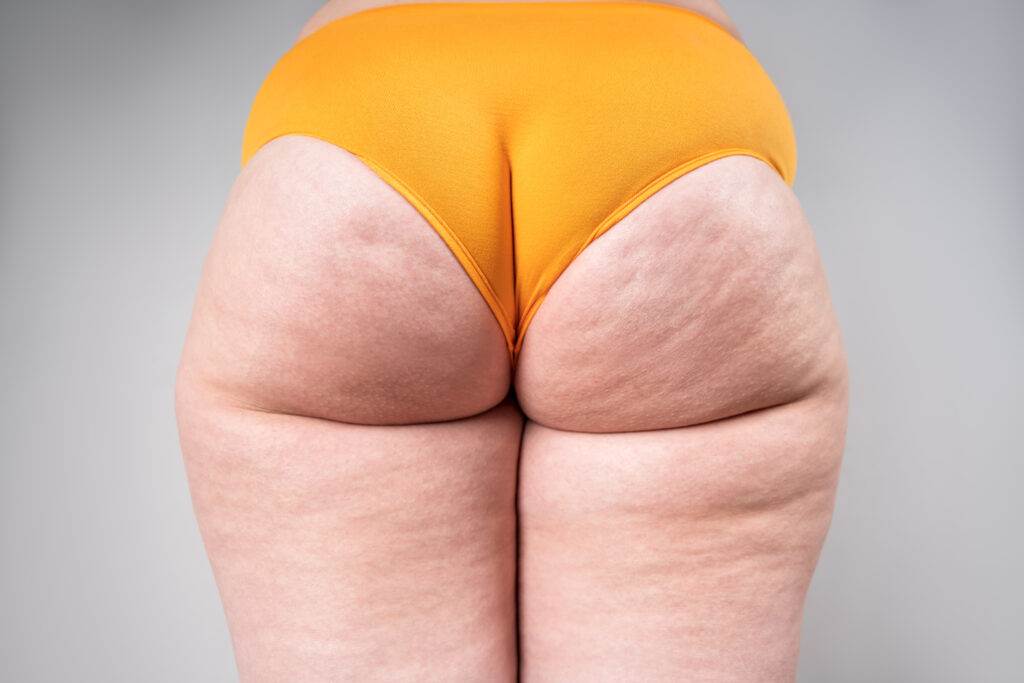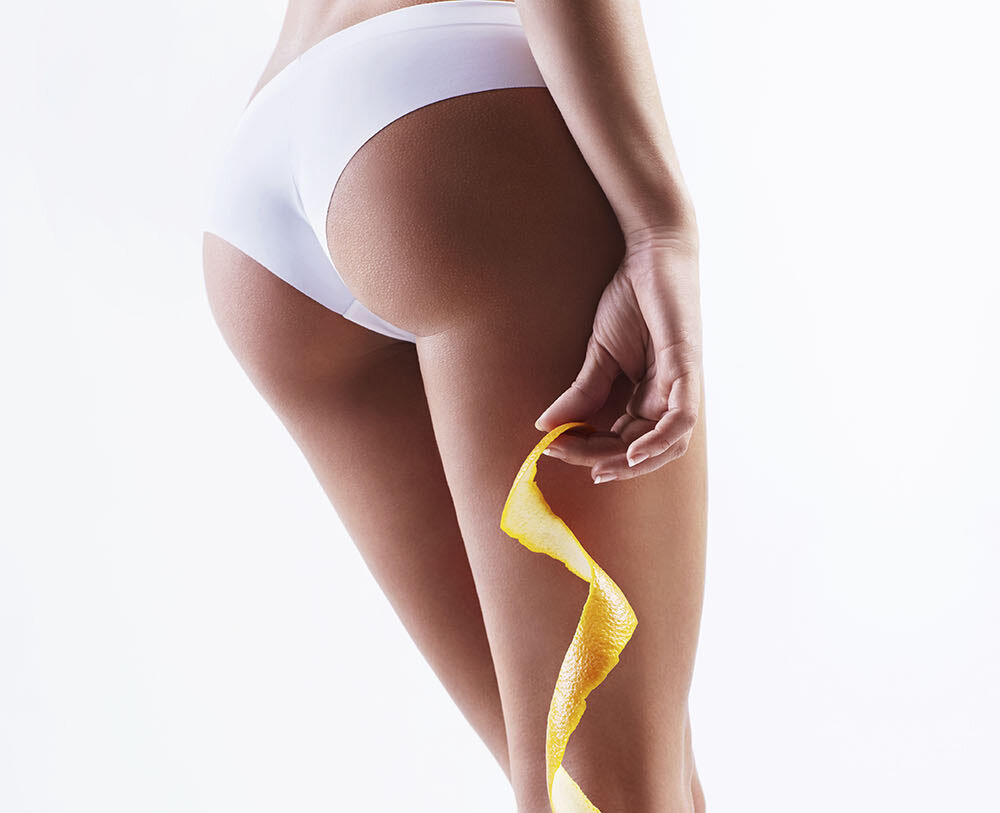Struggling with stubborn cellulite? At-home cellulite treatments can be your game-changer. These simple yet effective methods let you tackle those pesky dimples without stepping foot in a salon. From DIY scrubs to targeted creams for stretch marks, there’s a solution that fits your lifestyle and budget.
You don’t need fancy gadgets or expensive spa visits. With the right ingredients and techniques, you can boost circulation, tighten skin, and reduce stretch marks from the comfort of your home. Discover how easy it is to achieve smoother skin and regain confidence. Unleash the power of natural remedies and make cellulite a thing of the past. Your journey to firmer skin starts here.
Key Takeaways
-
Understand that cellulite is a common condition caused by factors like genetics, diet, and lifestyle. Recognizing these can help you approach treatment effectively.
-
While you may not completely eliminate cellulite, many at-home treatments can significantly reduce its appearance. Explore options that suit your lifestyle.
-
Incorporate regular exercise into your routine, as physical activity can improve skin tone and reduce the visibility of cellulite.
-
Consider natural methods such as dry brushing or coffee scrubs, which may help stimulate circulation and improve skin texture.
-
Maintain a healthy diet rich in fruits, vegetables, and whole grains to support skin health and potentially reduce cellulite.
-
Stay hydrated; drinking plenty of water helps keep your skin healthy and may minimize the appearance of cellulite.
Understanding Cellulite Basics
What is Cellulite?
Cellulite is a common skin condition that many people experience. It appears as dimpled or lumpy skin. This condition primarily affects women, though men can also develop it. The texture of the skin changes due to fat deposits pushing through the connective tissue beneath the skin.
Where is Cellulite Found?
Cellulite is most often found on specific areas of the body. The thighs, bottoms, and bellies are the most common spots. These areas tend to have more fat storage. Hormones, genetics, and lifestyle choices can influence its appearance.
Is Cellulite Harmful?
While cellulite can be a cosmetic concern, it is not harmful to health. Many people worry about its appearance, especially in summer when wearing swimsuits becomes common. Despite its prevalence, cellulite does not indicate any underlying health issues.
The formation of cellulite is linked to several factors. Genetics plays a significant role in whether someone will develop it. Hormonal changes during puberty, pregnancy, or menopause can also contribute. Poor diet and lack of exercise may worsen its appearance.
How Common is Cellulite?
Statistics show that approximately 80-90% of women experience some form of cellulite in their lifetime. This statistic highlights how widespread this condition is among women of all ages and body types.
Emotional Impact
Many individuals feel self-conscious about their cellulite. Social media often promotes unrealistic beauty standards. This can lead to negative feelings about one’s body image. People may avoid certain clothing or activities due to embarrassment.
Treatment Options
At-home treatments for cellulite have gained popularity. These include creams, scrubs, and massagers designed to improve skin texture. While results vary, some products claim to reduce the appearance of lumps.
Lifestyle changes can also help manage cellulite. Regular exercise strengthens muscles and improves circulation. Eating a balanced diet rich in fruits and vegetables supports overall skin health.
In summary, understanding cellulite helps demystify this common condition. Awareness can lead to better treatment choices and improved self-esteem.
Common Causes of Cellulite
Hormonal Factors
Hormones play a crucial role in cellulite formation. Estrogen is one of the most significant hormones linked to this condition. When estrogen levels drop, such as during menopause, blood flow decreases. This can lead to a reduction in collagen production. Collagen is vital for skin elasticity. Lower collagen levels can cause the skin to become thinner and more prone to cellulite appearance.
Other hormones also affect fat distribution in the body. For instance, insulin and thyroid hormones influence how fat cells store body fat. Imbalances in these hormones may increase the likelihood of developing fat deposits under the skin.
Genetic Predispositions
Genetics can also impact cellulite development. People with a family history of cellulite are more likely to experience it themselves. Specific genes dictate how fat is stored and how the skin ages. Those predisposed to lumpy areas may find that their skin texture changes more noticeably with age.
Genetic factors can determine skin thickness and elasticity. Thinner skin may show cellulite symptoms more prominently than thicker skin. This means that even individuals with low body fat can still develop noticeable cellulite.
Lifestyle Factors
Lifestyle choices significantly influence cellulite appearance. Diet plays a key role in managing body fat levels. A diet high in processed foods and sugars can lead to increased body fat. This excess fat may contribute to the visibility of fatty tissue beneath the skin.
Physical activity is equally important. Regular exercise helps maintain a healthy weight and improves circulation. Increased blood flow can enhance skin health and reduce the appearance of cellulite. Strength training can also tighten muscles beneath the skin, making cellulite less noticeable.
Hydration matters too. Drinking enough water keeps the skin plump and healthy, which may reduce the visibility of fatty deposits. Dehydrated skin can appear dull and saggy, making cellulite more pronounced.
Common Cellulite Myths
Many myths surround cellulite that can mislead people about its causes. One common myth suggests that only overweight individuals develop cellulite. In reality, anyone can have it, regardless of body weight or size.
Another myth claims that special creams or treatments can completely eliminate cellulite. While some products may improve skin texture temporarily, they do not remove subcutaneous fat or change its structure permanently.
Understanding these factors helps demystify cellulite formation. Recognizing hormonal influences, genetic risks, and lifestyle choices can empower individuals to take informed steps toward managing its appearance.
Can You Eliminate Cellulite
Treatment Options
Many people seek cellulite treatments to improve the look of their skin. Various options exist, including creams, lasers, and surgical methods. Each option has different effectiveness levels. Prescription cellulite creams may help reduce the appearance of cellulite dimples. However, they do not guarantee complete removal.
Laser cellulite treatments have gained attention. These treatments target fat beneath the skin, aiming to smooth out the surface. While some studies show promise, results can vary. Many individuals experience only slight improvements.
Managing Expectations
Complete elimination of cellulite is unlikely with current treatments. Most methods focus on reducing the appearance rather than removing it entirely. This means that users should manage their expectations. Focusing on improvement is more realistic than expecting perfect results.
Moderate and severe cellulite can be challenging to treat. Some people may have much cellulite in specific areas like thighs or buttocks. Treatments can help make these areas look better but will not erase all signs of cellulite.
Lifestyle Factors
Lifestyle changes can also play a role in managing cellulite. Regular exercise strengthens muscles and improves circulation. A balanced diet supports skin health and may reduce visible cellulite over time. Staying hydrated is essential as well; water helps keep skin plump.
Avoiding smoking and excessive alcohol consumption can benefit skin appearance too. These habits can worsen the look of unsightly cellulite. By adopting healthier habits, individuals may see an overall improvement in their skin texture.
Understanding Results
Results from cellulite reduction treatments vary widely among individuals. Factors such as age, genetics, and skin type all influence outcomes. Some people may notice significant improvements while others see minimal changes.
For those considering intensive cellulite treatments, consulting a healthcare professional is crucial. They can provide personalized advice based on individual needs and conditions. Understanding what to expect helps set realistic goals for treatment.
Effective At-Home Treatments
Massage Techniques
Massaging the affected areas can help improve blood flow. This increased circulation may temporarily reduce the appearance of dimples. Use your hands or a massage tool to apply pressure. Focus on areas with visible cellulite for about 10 minutes each day.
Regular massage can also promote lymphatic drainage. This helps remove toxins and excess fluid from the body. While results may vary, many people find this method beneficial for smoother skin.
Topical Creams
Topical creams play a significant role in at-home treatments. Look for products that contain caffeine or retinol. Caffeine can tighten the skin and enhance its texture. Retinol encourages cell turnover, which may improve skin appearance over time.
Apply these creams consistently to see potential results. Use them daily, especially after showering when skin is clean and more absorbent. Remember, while these products can help, they do not completely eliminate cellulite.
Body Wraps and Shapers
Body wraps and shapers offer another way to achieve temporary smoothing effects. These products can create a tighter appearance on the skin’s surface. Many people use them during special occasions or events.
Wraps often contain ingredients like clay or herbal extracts. They work by drawing out moisture from the skin, giving it a firmer look. Shapers, on the other hand, provide immediate compression and support.
Exercise Routine
Incorporating exercise into your daily routine is essential. Regular physical activity strengthens muscles and improves overall body tone. Focus on exercises that target the legs and glutes.
Activities like squats, lunges, and cycling are effective choices. Aim for at least 30 minutes of exercise most days of the week. Consistency is key to seeing improvements in muscle tone and skin texture.
Devices and Tools
At-home devices also exist for treating cellulite. Some options include radiofrequency devices and massagers. These tools use technology to stimulate collagen production in the skin.
Follow the instructions provided with each device carefully. Results will vary based on individual skin types and treatment frequency. Many users report positive changes after several weeks of regular use.
Consult a Doctor
If you seek more permanent solutions, consider consulting a doctor. Medical professionals can recommend advanced treatments like laser therapy or radiofrequency sessions. These options often yield longer-lasting results compared to at-home methods.
Discuss your goals with your doctor to find the best approach for you. They can guide you through available treatments tailored to your needs.
Role of Exercise in Reduction
Strength Training
Strength training is essential for reducing the appearance of cellulite. This type of exercise builds muscle under the skin. More muscle can help smooth out the body and make cellulite less noticeable.
Incorporating exercises like squats, lunges, and leg presses can target areas prone to cellulite. These exercises strengthen the thighs, buttocks, and abdomen. Building muscle also increases metabolism. A higher metabolism can lead to fat loss over time.
Cardiovascular Exercise
Regular cardiovascular exercise plays a significant role in reducing fat. Activities like running, cycling, or swimming boost heart rate and burn calories. Burning calories helps reduce overall body fat. Less fat means less visible cellulite.
Aim for at least 150 minutes of moderate-intensity cardio each week. This amount meets guidelines from health experts. Consistent cardio improves blood circulation too. Better circulation helps deliver nutrients to the skin, enhancing its overall appearance.

Consistency is Key
Consistency in an exercise routine is crucial for noticeable results. It’s not enough to work out once in a while. Regular workouts yield better outcomes over time. Sticking to a schedule helps maintain motivation.
Setting realistic goals can help with consistency. Start with shorter workouts and gradually increase duration and intensity. Tracking progress can also keep you motivated. Celebrate small achievements along the way.
Combining Treatments
Combining exercise with other at-home treatments enhances results. For example, using topical creams while exercising may improve skin texture further. Some creams contain caffeine or retinol, which can temporarily tighten skin.
A balanced approach is often most effective. Pairing strength training with cardio creates a well-rounded fitness plan. This strategy addresses both muscle building and fat reduction.
Real-Life Examples
Many people have reported success with regular exercise routines in reducing cellulite visibility. For instance, one individual combined strength training three times a week with daily brisk walking. After three months, they noticed a significant difference in their skin’s appearance.
Another example includes someone who included yoga into their routine. Yoga not only improved flexibility but also toned muscles and reduced stress levels. Lower stress can contribute to weight management as well.
Natural Minimizing Methods
Dry Brushing
Dry brushing is an effective method to exfoliate skin and stimulate circulation. This technique involves using a natural bristle brush on dry skin. It helps remove dead skin cells, promoting smoother skin.
Regularly dry brushing can also improve blood flow. Better circulation may lead to healthier-looking skin. It can be done before showering for best results. Focus on areas with cellulite, like thighs and buttocks.
Essential Oils
Using essential oils can enhance your skincare routine. Oils like juniper and rosemary are known for their potential skin-toning properties. These oils may help reduce the appearance of tiny bumps on the skin.
Dilute essential oils with a carrier oil before applying them to the skin. Massaging these oils into affected areas may improve texture and firmness. Consistent use can lead to noticeable changes over time.
Apple Cider Vinegar
Incorporating apple cider vinegar into skincare routines offers detoxifying effects. This natural ingredient is rich in vitamins and minerals that benefit the skin. It’s believed to help balance pH levels, which can improve overall skin health.
Mix apple cider vinegar with water for topical application. Apply it to areas prone to cellulite using a cotton ball. This method may help tighten the skin and reduce the visibility of imperfections.
Cosmetic Dermatology Techniques
While at-home treatments are beneficial, some may consider cosmetic dermatology techniques for more significant results. These methods include suction treatments or laser therapy, which target stubborn cellulite effectively.
Suction techniques create a vacuum effect on the skin’s surface. This process helps break down fat deposits beneath the skin. Results vary based on individual circumstances and treatment frequency.
Lifestyle Changes
Combining these natural methods with lifestyle changes enhances effectiveness. Staying hydrated is crucial for maintaining healthy skin. Drinking plenty of water helps flush out toxins and improves elasticity.
Eating a balanced diet rich in fruits, vegetables, and whole grains supports overall well-being. Foods high in antioxidants can promote better skin health as well.
In addition to exercise discussed previously, these at-home treatments can complement your efforts in reducing cellulite appearance.
Impact of Weight Loss
Cellulite Visibility
Losing excess weight can significantly reduce the visibility of cellulite. Weight loss helps to decrease the fat layer beneath the skin. This makes the skin appear smoother and firmer. As fat decreases, the dimpling effect of cellulite lessens. Studies show that individuals who maintain a healthy weight often report improved skin texture.
Maintaining a balanced diet is key in this process. Foods rich in fiber and antioxidants can help. These nutrients support skin health and promote overall wellness. Drinking plenty of water also hydrates the skin, making it look more vibrant.
Yo-Yo Dieting Risks
Yo-yo dieting can worsen the appearance of cellulite. This pattern involves losing weight quickly and then regaining it. Such fluctuations can stretch the skin. Over time, this leads to increased visibility of cellulite.
Research indicates that rapid weight loss can cause muscle loss as well. Muscle helps support the skin structure. When muscle mass decreases, skin may sag, making cellulite more noticeable.
Sustainable Weight Loss
A gradual and sustainable approach to weight loss is important. Experts recommend losing 1-2 pounds per week for lasting results. This method promotes healthier habits without extreme measures.
Focusing on long-term changes helps maintain results. Incorporating regular exercise is crucial. Activities like walking, swimming, or strength training build muscle while burning fat. A mix of cardio and resistance training works best.
Creating a meal plan can aid in achieving these goals. Include lean proteins, whole grains, fruits, and vegetables in your diet. Avoid processed foods high in sugar and unhealthy fats. These foods contribute to weight gain and may worsen cellulite.
Tracking progress can also motivate individuals to stay on course. Keeping a food journal or using apps can help monitor intake and activity levels.
Hydration and Skin Health
Importance of Hydration
Adequate hydration plays a crucial role in maintaining skin elasticity. When the body is well-hydrated, skin appears plumper and healthier. This helps reduce the visibility of bumpy skin and lumpy skin often associated with cellulite. Drinking enough water daily can make a significant difference in how your skin looks and feels.
Recommended Hydration Sources
Drinking plenty of water is essential. Aim for at least eight glasses a day. Consuming hydrating foods can boost your fluid intake. Foods like cucumbers and watermelon contain high water content. These foods not only hydrate but also provide vitamins and minerals that benefit skin health.
Moisturizing Benefits
Regularly applying lotion is vital for keeping skin supple. Moisturizers help lock in hydration and improve uneven skin texture. Choose lotions that contain ingredients like retinol to enhance skin’s appearance over time. Retinol promotes cell turnover, which can smooth out the bumps associated with cellulite.
Daily Routine Suggestions
Incorporating hydration into your daily routine is simple. Here are some steps to follow:
-
Drink Water: Start each day with a glass of water.
-
Eat Hydrating Foods: Include fruits and vegetables in meals.
-
Apply Lotion: Use moisturizer after showering to trap moisture.
-
Use Spa Treatments: Consider occasional spa visits for professional treatments that hydrate the skin.
These practices can lead to improved skin health over time.
Long-Term Effects
Maintaining proper hydration affects more than just appearance. It contributes to overall skin wellness, helping combat saggy skin as you age. Well-hydrated skin is less likely to develop issues such as dryness or irritation. This creates a smoother surface, making cellulite less noticeable.
Emotional Connection
Many people feel self-conscious about their skin’s appearance, especially when it shows signs of aging or unevenness. By focusing on hydration, individuals can take proactive steps toward improving their self-image. Feeling good about your skin can boost confidence in social situations.
Diet Tips for Reduction
Healthy Foods
A healthy diet plays a crucial role in reducing cellulite. Eating plenty of fruits and vegetables can support skin health. These foods are rich in vitamins, minerals, and fiber. They help the body eliminate toxins and reduce fat accumulation. Lean proteins, like chicken or fish, also contribute to muscle tone. Strong muscles can make the skin appear firmer.
Fresh produce such as berries, spinach, and carrots provide antioxidants. Antioxidants fight free radicals that damage skin cells. Incorporating these foods into daily meals can improve overall skin texture. A colorful plate often means a variety of nutrients.
Limit Processed Foods
Processed foods are often high in sugars and unhealthy fats. These ingredients can lead to fat accumulation in the body. Reducing intake of fast food, sugary snacks, and packaged meals is beneficial. Instead, focus on whole foods that nourish the body.
For example, choose whole grains over white bread or pasta. Whole grains provide more fiber and help maintain stable blood sugar levels. This balance can curb cravings for unhealthy options.
Include Healthy Fats
Including omega-3 fatty acids in your diet is essential. These healthy fats promote better skin health and reduce inflammation. Fatty fish such as salmon and walnuts are excellent sources of omega-3s. They support circulation and may improve the appearance of cellulite.
Antioxidants are equally important. Foods rich in antioxidants include dark chocolate, nuts, and green tea. These items help repair damaged skin cells and improve elasticity.
Hydration Connection
Hydration remains vital for skin health, as mentioned earlier. Drinking enough water helps keep the skin plump and elastic. It also aids in flushing out toxins from the body. Combining hydration with a nutritious diet amplifies benefits.
Aim for at least eight glasses of water daily. Herbal teas can also contribute to hydration while offering additional health benefits.
Balanced Approach
A balanced approach to diet is key for fat reduction and improving skin appearance. Focus on whole foods while limiting processed options. Regular meals filled with fresh produce, lean proteins, and healthy fats create a strong foundation for success.
Consider meal prepping to avoid unhealthy choices when hungry. Planning ahead makes it easier to stick to your goals.
Final Remarks
You’ve learned the essentials of at-home cellulite treatments. From understanding the basics to exploring effective methods, you now have a toolkit to tackle this common concern. Remember, consistency is key. Incorporate exercise, hydration, and a balanced diet into your routine for the best results.
Don’t let cellulite hold you back. Take charge of your skin health today. Experiment with different treatments and see what works for you. The journey to smoother skin starts with small changes. Embrace your body and celebrate your progress. Your self-care matters!
Frequently Asked Questions
What is cellulite?
Cellulite is a skin condition characterized by dimpled, lumpy areas, commonly found on thighs, hips, and buttocks. It occurs when fat deposits push through connective tissue beneath the skin.
What causes cellulite?
Common causes of cellulite include genetics, hormonal changes, poor diet, lack of exercise, and weight fluctuations. These factors can affect skin elasticity and fat distribution.
Can cellulite be completely eliminated?
While complete elimination of cellulite is challenging, its appearance can be significantly reduced through various treatments and lifestyle changes. Consistency is key for best results.
What are effective at-home treatments for cellulite?
Effective at-home treatments include dry brushing, coffee scrubs, and topical creams with caffeine or retinol. Regular use can improve skin texture and reduce the visibility of cellulite.
How does exercise help reduce cellulite?
Exercise boosts blood circulation and strengthens muscles, which can help smooth out the skin’s appearance. Activities like strength training and aerobic exercises target fat reduction effectively.
Does weight loss impact cellulite?
Yes, weight loss can reduce the appearance of cellulite. However, it may not eliminate it entirely, as skin elasticity plays a crucial role in how cellulite looks.
How important is hydration for skin health regarding cellulite?
Staying hydrated improves overall skin health and elasticity. Well-hydrated skin appears plumper and may minimize the visibility of cellulite. Aim for adequate water intake daily.





